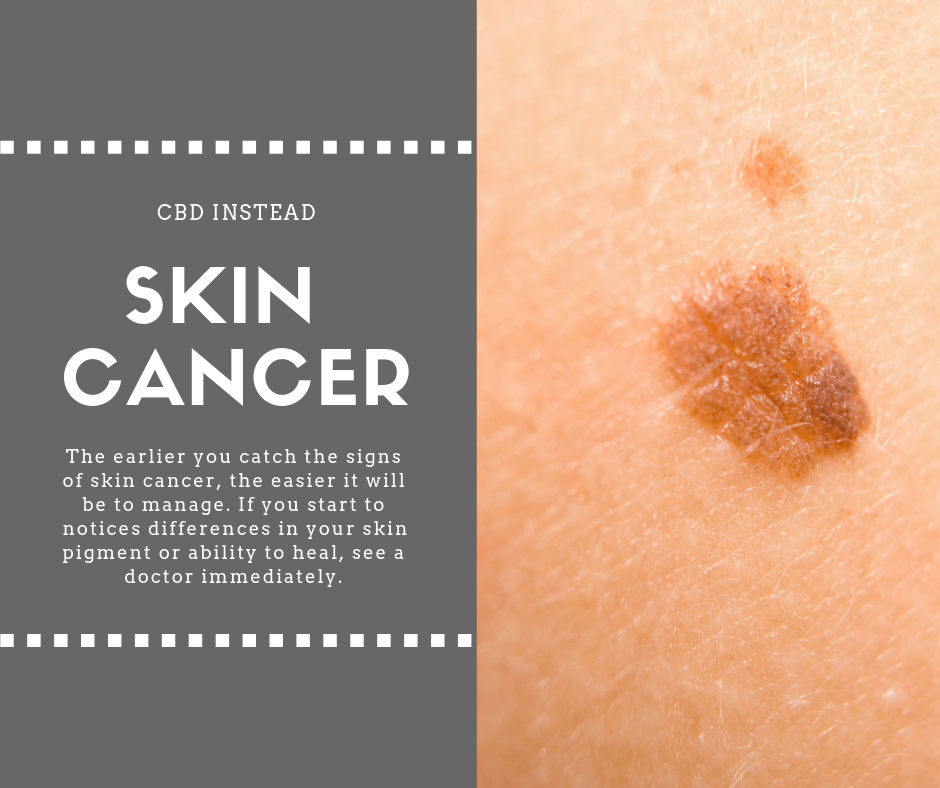The earlier you catch cancer, the easier it is to treat. This is why it is so important that you regularly visit the doctor and get checkups. Skin cancer is something that you can spot at home; doctors suggest checking your skin at least once a month. Here are some signs of skin cancer to look out for, so you know when it is just a mole or when it is time to go see the doctor.

The ABCDE Rule
When it comes to skin cancer, there is an ABCDE rule to remember when checking your skin for signs of cancer. Skin cancer generally starts as a white waxy lump or a brown scaly patch. When examining your skin, keep this in mind:
A- Asymmetry
When looking over your skin and you see a mole or birthmark that has areas that don’t match, it is time to go see a doctor.
B- Border
Are the edges of your mole or birthmark blurred, notched, or ragged? Then it is time to go get checked out.
C- Color
If you have patches of pink, white, or red on birthmarks or moles, this isn’t normal. Even if there is a mild difference in color, you should go see a doctor.
D- Diameter
Do you have a mole or birthmark that is growing? Or a new spot you hadn’t realized existed before. If the spot is growing larger than a quarter of an inch, you need to see a doctor.
E- Evolving
If your mole or birthmark seems to be changing in size or color, you need to see a doctor.
The least common type of skin cancer starts in your skin’s melanocytes, melanoma. While this cancer isn’t the most common, it is the most likely to spread out of control making it the most dangerous. The other types of skin cancer that you can develop that are more common are basal and squamous skin cancer.
Basal and Squamous Skin Cancer
Basal and squamous cell skin cancers may not be as dangerous as melanoma, but they are very common. These cancer cells are usually found in areas that get the most sun like your face, head, and neck. But they can show up anywhere.
Basal Cell Carcinoma Symptoms:
- Pale, firm, yellow, or flat areas that are similar to scars
- Raised reddish patches of skin that can be itchy
- Small red or pink bumps that are translucent, shiny, and pearly that can have brown, blue, or black areas
- Pink growths with raised edges that has a lower area in the center. This can contain abnormal blood vessels that spread out.
- Open sores
Squamous Cell Carcinomas Symptoms:
- Scaly or rough patches which can bleed or crust
- Raised lumps or growths that can sometimes have a lower area in the center
- Open sores which can have crusted or oozing areas. These won’t heal, and if they do, they always come back.
- Wart-like growths
Unique Symptoms of Skin Cancer
Not all skin cancers look the same or have these descriptions. If you notice anything different about your skin, you should go see the doctor and see what the problem is. Here are some things to look out for when it comes to unique symptoms of skin cancer:
- New moles, birthmark looking spots, or any other changes in pigment
- Any sores that don’t heal
- Redness or swelling around any moles
- Itching, pain, or tenderness on or under your skin
- Oozing, scaliness, or bleeding from your skin

Using CBD For Skin Cancer
Studies have suggested that cannabinoids like CBD may be able to help stop the growth of cancer by halting the cell division process without sacrificing the cell division abilities of the rest of your body. This is why many cancer patients are looking to medical cannabis because their bone marrow and hair will still grow while their cancer starts to die. CBD oil has shown in studies to help reduce pain and inflammation, making the recovery process less uncomfortable. Talk to your doctor about using CBD oil with your treatment, and then stop by our shop and look at our soothing topicals like this CBD hemp oil peppermint soothing salve.
Thank you readers for your interest in the article. Please like and comment so we have more motivation to write articles
Thank you readers for your interest in the article. Please like and comment so we have more motivation to write articles

0 Comment:
Post a Comment